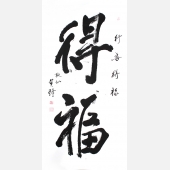您所在的位置:Galerie Urs Meile>画廊动态>正文
Anatoly Shuravlev - "China Connection"
2011-04-15 12:18:59
A Moscow artist with a second foothold in Berlin comes to Beijing. What he brings along is the newly gained experience as a curator, for he recently brought to life the special project "Through the ‘painting’" at the second Moscow biennial for contemporary art, which had invited artists from several European countries, from Taiwan and New Zealand but also a number of colleagues from China. On the other hand, he adds the experience and the knowledge gained in his work which has developed since the early 1980s and from the very beginning has always been preoccupied with questions concerning the concept of image, the representational function of art and all matters of visualization.
Shuravlev's early stages were in painting and object art with frequent use of sign systems, of script and word. He followed up this phase with his questioning of the image concept in historic drawings, watercolors and etchings of quasi-documentary character, while he himself worked exclusively with the medium of photography. By means of technically manipulated photographic copies—for instance, of French engravings from the time of archeological excavations in 18th century Egypt—Shuravlev created "impossible photos" showing views of the pyramids and the pharaonic tombs in a period where photography did not yet even exist. This exploration of the "politics of representation" finally led him to question the mediatized image in television, the Internet and magazines, again via the medium of photography. At present, his work seems to take a new "loop", as for some time now he has been combining photography and painting, by overpainting photos, making photographic copies of his own paintings, etc.
So this man has been around in Beijing for several weeks, as an artist-in-residence of Galerie Urs Meile, to make his most recent works happen right here. He is drawn to the markets and stores of Beijing, and what fascinates him most is the porcelain pieces. He sent me an email message with a self-timer photo entitled "My Boys" that shows him grinning among a whole squadron of Buddha statues in all sizes and shapes. And it is here that Shuravlev happened upon the Tibetan scroll paintings ( thang ka) which were to become the key to a whole new work complex of his, presented for the first time in the "China Connection" exhibition.
The basis of this work is the realization that the theological imagery, the manufacturing process and also the background sociology of the thangkas are quite similar to those of Orthodox icons in many respects. In both cases, there are strict rules for the making and the handling of images: certain motives are copied from picture to picture without the slightest variation. In both cases, the manufacturing process is therefore not considered a creative feat, nor does the name or the very identity of the maker play any role, because the act of painting itself is deemed a religious accomplishment, a worshipping ceremony. Sometimes they are made be a team, with each member being assigned a different task: one might be specializing in doing backdrops, another in bodies and faces. Although the painting follows ancient and rather strict rules and individual artists are hardly allowed to improvise freely, nevertheless various styles and schools have evolved over time. The Tibetan scroll painting and the Orthodox icon are regarded as representations or "vessels" of the portrayed deity or saint, that is, they are themselves holy and can provide assistance to believers on their path to the divine light.
In the context of this knowledge, which combines structural insight into both cultures, Shuravlev reexamines the Tibetan scroll painting, applying a whole new interpretation to it: by overpainting the Buddha portrait at the center of a 6 x 4 meter thangka with a black field (of 2.3 x 2.3 m size), he alludes to that immense revolution which in the 19th century had seized Russian Orthodox cult painting, but also Russian academic art as a whole - Kasimir Malevich and his "Black Square", this outwardly quite simple masterpiece of 1915 that in its essence was of spiritual sublimity, where Malevich as a Christian mystic searched for an expression in which the spirit could triumph over matter, implying also all ideologies and reflections of the secular. A similar revolution, however, has never happened to the thangka, so that Shuravlev’s act might be regarded to some extent as a modernization impulse for the scroll painting. Next to his " 'Black Square' for China", the artist places another work involving the Tibetan scroll paintings: thangkas that were photographed and overpainted with abstract patterns in black-and-white tones, to be then once more photographed and printed out as a photo image so that the various manners of representation come in layers, as in a palimpsest. Through Shuravlev’s intervention, the transformation process that for the thangka began with the evolution of individual styles and schools is continued into the present - just like Shuravlev’s work, by virtue of these personal interpretations in the field of artistic representation, has arrived in China.

 黄琦
黄琦 测试用艺术
测试用艺术
